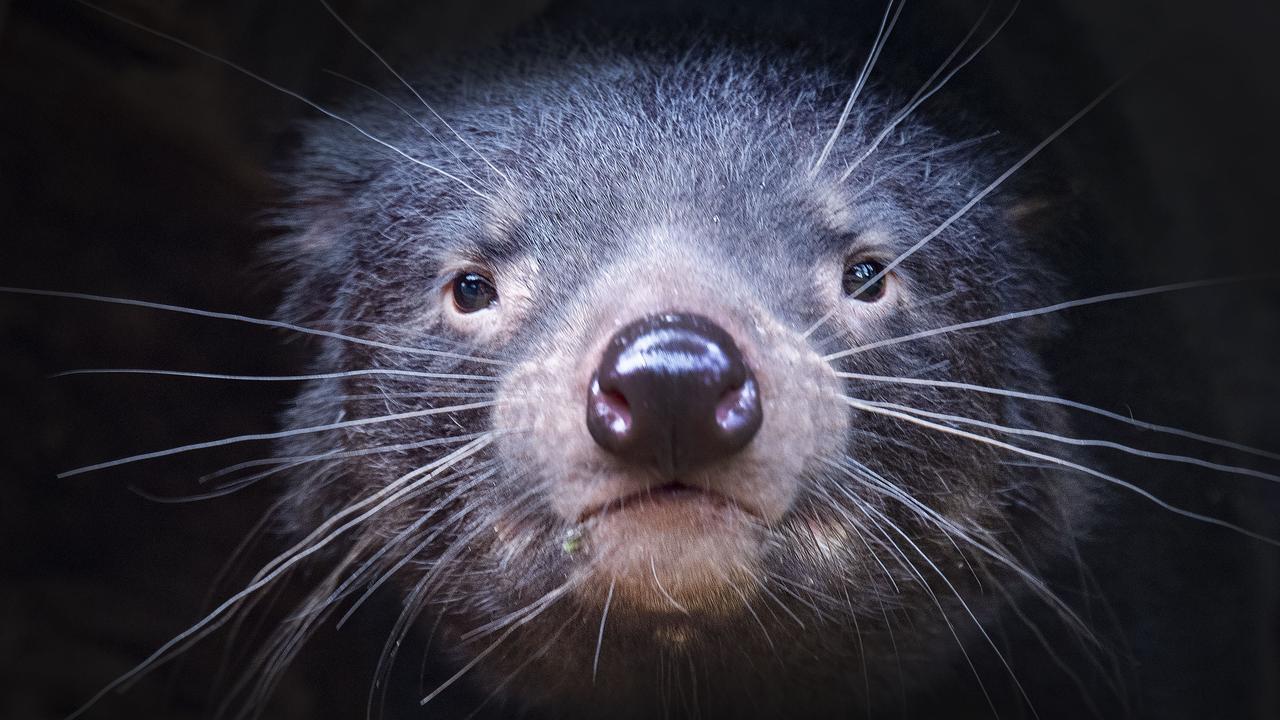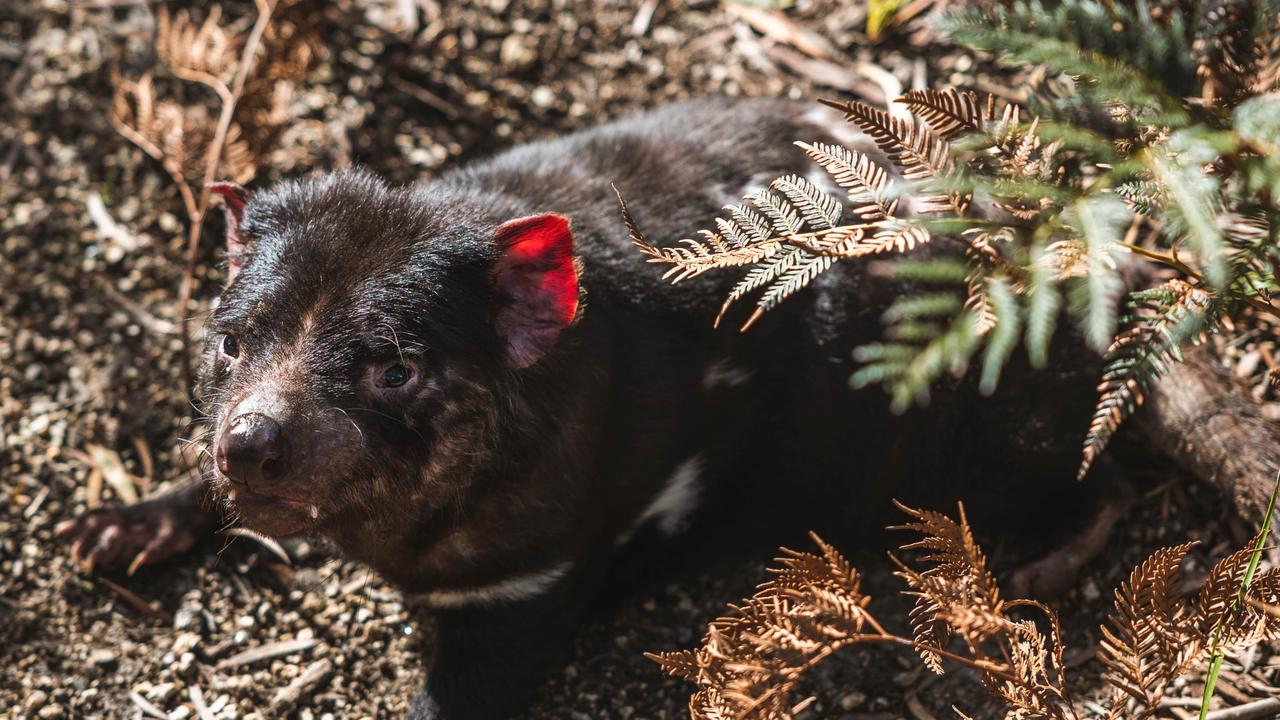Devil is in the detail, we’re harming our wildlife
Humans are altering the diet of Tasmanian devils, which may accelerate their decline

READING LEVEL: ORANGE
Typically,* the Tasmanian devil is “top dog”* of the land, feeding on whatever it pleases – until now.
According to a study led by University of NSW (UNSW), Tasmanian devils which live in human-modified* landscapes* could be narrowing* their diet.
The research, published recently in Scientific Reports, suggests devils have access to vastly* different cuisines depending on the type of environment they live in.
“We found Tasmanian devil populations had different levels of variation* in their diet depending on their habitat*,” says Anna Lewis, a PhD candidate at UNSW Science and lead author of the study. “The more that habitat was impacted* by humans, the more restrictive* the diet became.”

A previous study by the team found most devils eat on the same food items consistently* over time. But humans could be influencing* whether they have access to their favourite foods.
“How humans change the environment impacts the animals within them,” says Professor Tracey Rogers, an ecologist* at UNSW and senior author of the study. “Even small changes can have significant consequences* for devils, so we need to be mindful* of the consequences of our actions.”
Researchers found devils in human-impacted landscapes, such as cleared land, fed on the same food items, primarily medium-sized mammals. Meanwhile, in environments like rainforest areas, devils ate a broader range of prey including smaller animals, such as birds, into their diets.

“We found devils in heavily-altered* areas like cleared land fed on a smaller range of prey compared to populations living in ancient undisturbed regions, who had much more variety in their diet,” Ms Lewis says. “They may be turning to human-derived* sources of food, such as highway roadkill*, which are more readily available.”

Devils that frequently eat carcasses* is of particular concern as they are at risk of spreading the highly contagious* and fatal cancer, Devil Facial Tumour Disease (DFTD). The disease has already reduced local devil populations by 82 per cent and spread to most of Tasmania.
“The highest rate of cancer transmission* other than during the mating season occurs when they’re feeding around these large carcasses,” Ms Lewis says. “So, there could be an increased chance for the disease to spread among devils, and the devils themselves are also at risk of being hit while feeding.”
GLOSSARY
- typically: generally or normally
- top dog: a person or animal who is successful or dominant in their field
- human-modified: change of natural environment by humans
- landscapes: a part of Earth’s surface that can be viewed at one time from one place
- narrowing: limited in extent
- vastly: to a very great or vast degree or extent
- variation: a change or slight difference in condition
- habitat: the natural home or environment of an animal
- impacted: have a strong effect on someone
- restrictive: limiting
- influencing: to change the animal’s behaviour in an indirect but usually important way
- consistently: something that’s done the same way for a long time
- ecologist: a scientist who studies the relationships between organisms and their environment
- consequences: a result or effect, typically one that is unpleasant
- mindful: to be aware of something
- heavily-altered: to change in a big or obvious way
- human-derived: to obtain because of a human
- roadkill: a killing of an animal on the road by a vehicle
- carcasses: the dead body of an animal
- contagious: spreading disease
- transmission: passing it from one animal to another
QUICK QUIZ
- Tasmanian devils living in which landscapes could be narrowing their diet?
- Why are habitats that have been impacted by humans putting the devils at risk?
- Why does Tracey Rogers, an ecologist at UNSW Science say, "Even small changes can have significant consequences" for devils?
- Why is it such a big problem when devils eat roadkill?
- What is DFTD?
EXTRA READING
Bath time for rescued Tassie devil
Tassie devils back from the brink in the wild
Wild devils return to mainland after 3000 years
LISTEN TO THIS STORY
CLASSROOM ACTIVITIES
Tasmanian devil Menu
Design and write up a menu for a gourmet meal, fit for a Tasmanian devil.
Your menu should include a variety of foods that they enjoy eating.
Have a starter, main, and dessert.
Write and decorate your menu as if it was to be presented at a restaurant.
Time: allow 45 minutes to complete this activity
Curriculum Links: English, Science, Critical and creative thinking
2. Extension
“The more that habitat was impacted by humans, the more restrictive the diet became.”
What does this statement tells us about how we need to consider animal habitats when clearing land and planning for large infrastructure programs?
Time: allow 10 minutes to complete this activity
Curriculum Links: English, Science, Personal and social, Critical and creative thinking
VCOP ACTIVITY
Down-level it
When you up-level a sentence, you do things to it to improve it: make it more interesting, or more complex.
But sometimes, when we read something it can be too complex and we don’t understand it very well. You ask someone to explain it to you, they do (in a simpler way) and you think, well why didn’t they just say that?
Go through the article and find a sentence or two that is complex, or hard to read.
Ask an adult what it means, or try and look some of the words up in the glossary.
Once you know what it means, see if you can rewrite it in a simpler way- down-level it.
Make sure you don’t change the meaning of the sentence in any way though.

